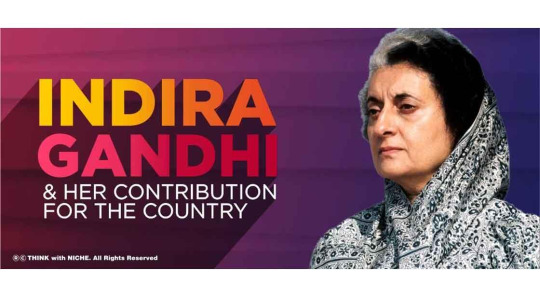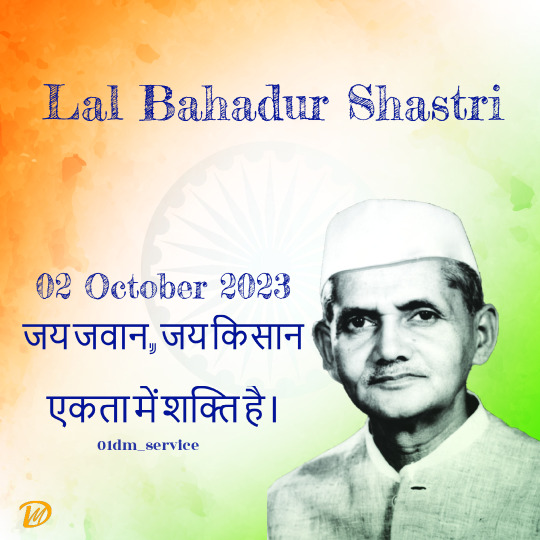#indiragandhi
Text
Indira Gandhi

Today, we seek the blessings of India’s two great leaders - Indira Gandhi and Sardar Patel.❤️❤️Every step we take, today, and everyday, is a tribute to their selfless service and the sacrifices they made for India’s unity.
#IndiraGandhi#IronLady#FirstWomenPM#BharatRatan#Deathanniversary#graphicdesign#development#webdevelopment#mobileappdevelopment#webdesign#DigitalMarketing#SEO#SMO#applications#ddm387#ddm#logodesign#expertcustomerserviceonline#Customerservice07
4 notes
·
View notes
Text

Celebrating Cultural Connections: The World Romani Congress in Chandigarh, 1976
In October 1976, Chandigarh, India, hosted a historic gathering that transcended borders and celebrated cultural identity—the World Romani Congress. Organized under the patronage of Prime Minister Indira Gandhi, this landmark event brought together Roma representatives from around the globe to commemorate their shared heritage, discuss common challenges, and advocate for their rights.
Historical Context:
The Romani people, known for their rich cultural heritage and diverse traditions, trace their origins to northern India, making their way across continents over centuries. Despite facing discrimination and marginalization, they have preserved their unique languages, customs, and identity.
Significance of the Congress:
The World Romani Congress in Chandigarh was a significant milestone. It provided a platform for Roma leaders, activists, scholars, and community members to come together and address issues affecting their communities globally. Key topics included education, healthcare, political representation, and cultural preservation.
Participants and Leaders:
Prime Minister Indira Gandhi played a crucial role in supporting and facilitating the congress, highlighting India’s historical ties with the Roma people. Among the prominent figures was Veerendra Rishi, an Indian scholar and historian, who contributed scholarly insights into the historical connections between the Roma and India. His presence underscored the cultural exchange and mutual influences between the Roma and Indian communities over centuries.
Discussions and Outcomes:
Throughout the congress, participants engaged in discussions that ranged from historical ties between the Roma and India to strategies for combating discrimination and promoting socio-economic advancement. Cultural performances, exhibitions, and academic sessions showcased the diversity and richness of Romani culture, fostering greater understanding and appreciation among attendees.
Legacy and Continued Impact:
The World Romani Congress left a lasting legacy by strengthening global Roma solidarity and raising awareness of their cultural contributions. It paved the way for continued international dialogue and collaboration among Roma communities worldwide, inspiring ongoing efforts to uphold their rights and dignity.
Conclusion:
The World Romani Congress in Chandigarh, 1976, stands as a testament to the resilience and cultural pride of the Roma people. By uniting in India, they reaffirmed their historical roots and forged bonds of solidarity that continue to resonate today. This congress remains a pivotal moment in the ongoing struggle for Romani rights and recognition, reminding us of the importance of celebrating diversity and honoring cultural heritage on a global scale.
#Chandigarh#RomaFestival#RomaCongress#India#IndiraGandhi#WorldRomaniCongress#Bharat#RomaAreChildrenOfIndia#RomaIndianDiaspora
0 notes
Text
The Emergency in India: A Dark Chapter in Indian Democracy
Prime Minister Indira Gandhi announced the Emergency in India on June 25, 1975, and it lasted until March 21, 1977. It was one of the most contentious and difficult times in the country's post-independence history. India's democratic fabric was severely impacted during this 21-month period by the suspension of constitutional rights, massive political repression, and press control.
Background and Causes
The June 12, 1975, ruling of the Allahabad High Court, which found Indira Gandhi guilty of electoral malpractices and ruled her election to the Lok Sabha illegal, served as the immediate impetus for the Emergency. Gandhi convinced President Fakhruddin Ali Ahmed to issue a state of emergency, saying internal disturbances, in response to growing political pressure and the threat of losing power.
Still, the Emergency had deeper origins. Social trouble economic hardships, and political instability characterized the early 1970s. Widespread discontent has been exacerbated by food shortages, unemployment, and inflation. Massive demonstrations and strikes were orchestrated by the opposition, led by figures like Jayaprakash Narayan, who demanded that Gandhi step down and that structural changes be made.
Key Features of the Emergency
Suspension of Fundamental Rights: The Indian Constitution's fundamental rights were suspended as a result of the declaration of emergency. In effect, the rights guaranteed by Articles 14 (equality), 21 (life and personal liberty), and 22 (protection from arbitrary arrests) were repealed. The Maintenance of Internal Security Act (MISA) allowed for the arrest of political opponents, activists, and dissenters without the need for a trial.
Censorship and Media Control: The freedom of the press was drastically reduced. Newspapers had to get official permission before printing anything, which resulted in extensive censorship. Reputable editors and journalists were arrested, and government-opposing media outlets were closed down.
Political Repression: Countless opposition leaders and activists found themselves behind jail. Prominent people include Atal Bihari Vajpayee, Morarji Desai, and Jayaprakash Narayan were among them. There were harsh crackdowns on political organizations, particularly those that opposed the Congress party.
Forced Sterilizations: The implementation of a contentious and harsh population control program was led by Sanjay Gandhi, the son of Indira Gandhi. Sterilization was forced onto millions of men and women, resulting in massive violations of human rights and public indignation.
Amendments to the Constitution: In an effort to bolster its authority, the administration approved a number of constitutional modifications. The 42nd Amendment, sometimes referred to as the "Mini-Constitution," significantly altered the Constitution by strengthening the executive's power and limiting the judiciary's.
Impact and Legacy
The Emergency had a significant impact on India's democratic institutions and political climate.
.
Erosion of Democratic Norms: During this time, democratic institutions and norms were undermined and there was an unparalleled concentration of power. There was a lot of pressure and influence on the court, which has historically served as a safeguard against executive overreach.
Public Disillusionment: The Indian population was affected by the Emergency in a significant way. There was a general lack of trust in Indira Gandhi's leadership and the Congress party as a result of the arbitrary arrests, violations of human rights, and repression of dissent.
Political Realignment: Following the end of the Emergency, Indira Gandhi and the Congress party suffered a crushing defeat in the 1977 national elections. The first non-Congress government in Indian history was brought to power by a group of opposition parties known as the Janata Party.
Legal and Constitutional Safeguards: The Emergency forced later administrations to implement constitutional and legal protections to stop the occurrence of another authoritarian era. In order to uphold and strengthen democratic institutions and civil freedoms, the 44th Amendment Act of 1978 was passed.
The Indian Emergency continues to serve as an alarming indication of the weakness of democratic institutions and dangers associated with unchecked presidential authority. It underlines how crucial it is to remain vigilant in defending democratic values, the rule of law, and civil freedoms. The lessons learnt during the Emergency era are vital for maintaining and fortifying India's democratic fabric as the nation navigates its democratic journey.
1 note
·
View note
Text

The Nautamlal Mehta family has been connected with Nehru and Indira Gandhi since 1919, with compelling evidence supporting this. Explore the legacy of Nehru and Indira Gandhi and their rare patriotism for Mother India.
0 notes
Text
Upto INR 1,00,000 | SERB POWER Fellowship | #research | Science and Engineering scholars
Official Link : https://www.buddy4study.com/scholarship/serb-power-fellowship
youtube
#internship2024#fellowship#engineering#science#undergraduatecourses#postgraduates#tamilnadu#india#latestjobs2024#viralreels#viralvideo#centralgovernmentjob#ignacia#indiragandhi#indiragandhinationalcentre#banking#finance#privatesectorjob#Youtube
0 notes
Text
Discovering Indira Gandhi's Journey 🌟
Introduction: Let’s dive into the captivating life of Indira Gandhi – the first woman Prime Minister of India, born on November 19, 1917, in Allahabad. Her story unfolds against the backdrop of a family deeply rooted in India’s history.
Identity and Background: As the daughter of Jawaharlal Nehru, India’s first Prime Minister, Indira’s early years were filled with political conversations.…
View On WordPress
#BangladeshLiberationWar#EmergencyEra#Empowerment#FirstWomanPrimeMinister#IndiraGandhi#LeadershipLegacy#Philosophies#PoliticalHistory#Resilience
0 notes
Text
https://saptarishisshop.com/karma-rebirth-and-jyotish-by-o-d-mande/
Karma Rebirth and Jyotish by O D Mande
In this article, O D Mande describe the concept of Karma and Reincarnation with example charts of Jawahar Lal Nehru, Indira Gandhi, Amitabh Bachchan, & Lahiri Mahasaya. The writer feels understanding one’s karma ought to be the primary purpose of Jyotish, the timing of materialistic events like marriage, childbirth, professional gains, etc being secondary.
#vedicastrology#karma#rebirth#jyotish#astrology#JawaharLalNehru#IndiraGandhi#AmitabhBachchan#LahiriMahasaya#chartanalysis#saptarishisastrology
0 notes
Text

Wishing you all a harmonious National Integration Day. We may come from different paths, but we are united by our nation. Let us all unite together to strengthen our nation. 🇮🇳
0 notes
Text
Indira Gandhi and her contribution for the country

Indira Gandhi, daughter of India’s first Prime Minister, Jawaharlal Nehru, was the 3rd PM, and the first and only female prime minister of India. She was undermined by many, as she was a woman running the cabinet of male ministers but her boldness and strategical decision making made people realise her potential. She had contributed majorly to the development of the country.
Biography of Indira Gandhi
Indira Gandhi's early life and upbringing heavily influenced her political career. Born on November 19, 1917, in Allahabad, she witnessed firsthand the struggle for Indian independence and the sacrifices made by her father Jawaharlal Nehru and other freedom fighters. Her education, both in India and abroad, broadened her horizons and nurtured her passion for social justice.
Growing up in a household deeply involved in the struggle for Indian independence, Indira Gandhi was exposed to the fervor and sacrifices of her father and other freedom fighters. This upbringing instilled in her a strong sense of patriotism and an unwavering commitment to the welfare of the nation.
Indira Gandhi's education played a crucial role in shaping her worldview and nurturing her passion for social justice. She received her early education at the Modern School in Delhi, where she imbibed progressive ideas and imprinted her leadership qualities. Later, she pursued higher education at the University of Oxford in England, where she developed a deeper understanding of international affairs and politics. These formative years broadened her horizons and equipped her with the knowledge and skills necessary for her future political endeavors.
Married to Feroze Gandhi, a journalist and political activist, Indira Gandhi faced numerous challenges as a woman in a male-dominated political landscape. However, she defied societal expectations and emerged as a charismatic and influential leader in her own right.
Indira Gandhi's political career gained momentum when she joined the Indian National Congress party, which played a pivotal role in the struggle for independence. Under the guidance of her father, she quickly rose through the ranks and became an integral part of the party's leadership. Her sharp intellect, strong determination, and excellent organizational skills earned her respect and admiration within the party.
To Read This Full ARTICLE, Click Here
0 notes
Text

Remembering Lal Bahadur Shastri on 2nd October: A Pioneer of Indian Independence
#lalbahadurshastri#india#indiragandhi#atalbiharivajpayee#charansingh#morarjidesai#hddevegowda#travel#gkfacts#gk#travelphotography#narendramodi#hd#gandhijayanti#lalbahadurshastrijayanti#primeminister#upsc#mahatmagandhi#motivation#civilservice#indian#bjp#rajivgandhi#love#apjabdulkalam#motivationalquotes#jawaharlalnehru#instagram#congress#apj
1 note
·
View note
Text
#Emergency#KanganaRanaut#BollywoodActor#Congress#BJP#LokSabhaElections#IndiraGandhi#Parliament#PMModi#media#Bollywood#BollywoodNews#PoliticalParty#hindi#HindiNews#HindiNewsLive#youthjagran#youthjagrannews#youthjagranindia
0 notes
Link
#AIADMK#armsrecoverycase#AzamKhan#BiharAssembly#Biharchiefminister#BJP#Congress#courtverdict#disproportionateassetscase#disqualificationlaw#fodderscam#HaryanaAssembly#hatespeechcase#imprisonment#IndiraGandhi#JJayalalithaa#LaluPrasadYadav#LokSabha#Muzaffarnagarriotscase#RahulGandhi#RampurSadarconstituency#rapecase#RepresentationofthePeopleAct#RJD#SamajwadiParty#sixyears#TamilNaduchiefminister
0 notes
Text

ICYMI: Book Review of #BombayMonsoon by @James.ziskin. A thriller set in 1970s India. https://suanneschaferauthor.com/book-review-bombay-monsoon/ @oceanviewpub
#Thrillers#FictionSetInIndia#IndianPartition#HistoricalFiction#IndiraGandhi#Bombay#IndianEmergency#NetGalley#jameswziskin#bookstagram#am reading
0 notes
Photo

Shri Sanjay Gandhi Punyatithi #sanchitainfra #gandhinagar #gandhi #rahulgandhi #mahatmagandhi #contouringandhighlighting #gandhijayanti #gandhidham #soniagandhi #priyankagandhi #gandhiji #bhavyagandhi #gandhiquotes #rahulgandhimemes #indiragandhi #rahulgandhiforpm #propagandhi #gandhinagardiaries #rajivgandhi #happygandhijayanti #sanjaygandhinationalpark #priyankagandhivadra #adogandhisboy #jonitagandhi #rahulgandhi2019 #gandhi150 #mahatmagandhiquotes #soniyagandhi #gandhimemes #marugandhinagar #niftgandhinagar #gandhiat150 #indiragandhiinternationalairport #gandhiashram #rupindergandhi #gandhimaidan #gandhicrew #adogandhisball #rahulgandhijokes #conturingandhighlighting (at Sanchita Infrastructure Private Limited) https://www.instagram.com/p/CmIxnTwjpAP/?igshid=NGJjMDIxMWI=
#sanchitainfra#gandhinagar#gandhi#rahulgandhi#mahatmagandhi#contouringandhighlighting#gandhijayanti#gandhidham#soniagandhi#priyankagandhi#gandhiji#bhavyagandhi#gandhiquotes#rahulgandhimemes#indiragandhi#rahulgandhiforpm#propagandhi#gandhinagardiaries#rajivgandhi#happygandhijayanti#sanjaygandhinationalpark#priyankagandhivadra#adogandhisboy#jonitagandhi#rahulgandhi2019#gandhi150#mahatmagandhiquotes#soniyagandhi#gandhimemes#marugandhinagar
0 notes
Text
Stipend INR 10,000 | IGNCA Internship Program | UG | PG | Research Scholars
youtube
Official Link : https://www.buddy4study.com/scholarship/ignca-internship-scheme
#tnsfrbc#internship2024#undergraduatecourses#postgraduates#fellowship#tamilnadu#india#latestjobs2024#viralreels#viralvideo#centralgovernmentjob#ignacia#indiragandhi#indiragandhinationalcentre#banking#finance#privatesectorjob#Youtube
0 notes
